Restaurant Gordon Ramsay opened in 1998 on the site of the former La Tante Claire. Gordon has long since moved out of the kitchen to build a restaurant and media empire, but this is the flagship of the group, retaining its three Michelin stars right up to the present day. Matt Abe has been in charge of the kitchen since 2020 as chef patron after being chef de cuisine here, since 2015 and previously working in the Gordon Ramsay empire since he was 21 years old. Matt started his career in Australia at Aria in Sydney and Vue de Monde in Melbourne.
The dining room seats up to 45 diners. A range of menus are offered. As well as a la carte at £180 for three courses, there was a prestige menu at £210, and carte blanche menu at £260. The wine list these days appears on an electronic tablet. I have written about it previously. It runs to sixty pages. Current sample bottles include Domaine Gilles Gaudron Les Vaux Louis 2019 at £65 compared to its shop price of £24, Bibi Graetz Soffocone di Vincigiliata 2014 at £70 for a wine that retails at £31, and Domaine Bernard Gripa Saint Veray Les Pins 2020 at £95 for a bottle that will set you back £26 in a wine shop. There is no shortage of grander labels, such as Chateau Montrose 1995 at £635 compared to its retail price of £168, and Etienne Guigal La Turque 2004 at £995 for a wine with a current market value of £290.
The meal today started with a quartet of canapes. Smoked Cheddar gougeres were served warm and had comforting choux pastry and plenty of cheese flavour. Buckwheat tartlet had a topping of beef tartare and dill pickle with pickled mustard seeds. The beef and pastry were good though the strong dill taste was a little dominant to my taste. A chickpea tartlet contained pickled celeriac, chicken liver parfait and orange and Madeira jelly. The orange element for acidity was a good design idea to balance the richness of the liver, though for me both the liver parfait and earth celeriac flavours could have been a touch more pronounced. The best of the canapes was a savoury sable biscuit with French onion cream and oscietra caviar from Paris supplier Kaviari. The contrast of the humble onion and the elegant caviar tastes worked well, nicely brought together with the texture of the base (canapes 17/20 average).
Next was a little cup of puy lentil and chestnut cappuccino. I am a big fan of soup, which seems to have gone out of fashion in restaurants in this Instagram age. This one was good, though for me the lentils and chestnut flavours could have been deeper. I fondly recall Steve Terry’s dazzling cauliflower soup at the late lamented The Hardwick, which was an exemplar of how to bring out a remarkable depth of flavour from a humble ingredient. The version here could also have been a touch hotter when it arrived (16/20).
Colchester oyster came with oyster custard, tapioca pearls and Imperial gold caviar with oyster leaf, oxalis (wood sorrel) and chives. On the side was oyster tempura with wild garlic dill pickle and smoked picked onion gel. The oyster was high quality and the textural contrast between the elements worked well. Tempura is a tricky thing to pull off, and London’s dining rooms are sadly full of overly thick battered ingredients posing as tempura. Not here though, as the batter was light and crisp (17/20)
Parker House rolls were delightful, made in-house. This slightly sweet bread gets its name from the Parker House hotel in Boston, where the bread was first created sometime after the hotel opening in 1855. Varying versions of the origin story exist, though all seem to involve an angry pastry chef throwing unfinished rolls in an oven, which accounts for their somewhat dented appearance. Whatever the true origin, these are a particularly enjoyable and comforting bread roll, milk contributing to the texture, the rolls lacquered with melted butter and sprinkled with salt. The version here arrived at the table, as golden in colour as autumn leaves.
Better was a large scallop from the Isle of Skye, very lightly seared and finished on a Japanese barbecue and brushed with shellfish oil, seaweed powder and lemon zest. This was cut in two and served with some broccoli cream with lemon gel and crouton, all resting in a sauce of miso beurre blanc. The scallop had lovely natural sweetness and was precisely cooked, the beurre blanc providing richness with the lemon gel giving just a touch of balancing acidity (19/20).
Chestnut linguine followed, offered with a four-year aged Parmesan sauce made with chicken stock and white wine, and garnished with white truffle from Croatia. This was a simple dish, deliberately so in order to act as a showcase with the new season truffle. This was supplied by Wiltshire Truffles and had a lovely aroma, while the pasta itself had excellent texture, the sauce was not too rich (18/20).
Next was a poached fillet of brill stuffed with Morteau sausage (from Franche-Comté in eastern France). The fish was topped with crushed hazelnut and was accompanied by two sauces. First was a vin jaune sabayon, a classical sauce from the Jura that went very well with the brill. Brill can be a fine fish and this was very good, the fish cookery very accurate and the sausage stuffing an interesting idea that worked well. If the dish had ended there, I would have scored it very highly. However, there was a problematic second sauce of hazelnut praline that was just too sweet to my taste. There is certainly a tradition of serving fish with some sweet elements in French cuisine. For example, there are fish dishes with sauces that use vanilla, the idea possibly originating from the Comoros, where the French started growing vanilla in the 1890s, and where vanilla sauce has used with lobster. Since at least the 1950s. However, I find the effect of savoury fish with sweetness can be quite jarring, and this hazelnut praline was just too sweet. I would much rather that this dish element simply never existed, or found its home in a dessert (barely 16/20 as it was, much higher without the hazelnut element). In this case a little more simplicity in the dish design would have worked wonders.
Things got back on track with the final savoury dish, sirloin of fallow deer from Brett Graham’s farm Aynhoe Park in Northamptonshire. This was served with smoked hay cream, crisp maitake (hen of the woods) mushroom, and venison jus with green peppercorns. On the side was a fried bun stuffed with shoulder of venison, black garlic purée, garlic capers and whiskey purée. The venison had lovely flavour and the jus was rich, with just enough bite from the peppercorns to avoid it becoming cloying. Personally, I would have been interested to see a grander mushroom like a late season cep rather than maitake. However, this is a quibble, and I really liked this dish overall. I particularly liked the fried bun, which had lovely texture and gorgeous flavour from its nicely judged filling (18/20).
In place of a cheese board was twice-baked cheese soufflé using Gruyere, Cheddar, Parmesan and Vacherin fondue, with pickled walnuts to provide some contrasting texture and flavour, Blossom Honey and a little white truffle. This was a very well-executed dish, the flavours working harmoniously together (18/20).
Pre-dessert was toasted brioche ice cream with granita of Ratafia Champenois, a sweet fortified wine from Champagne (in this case the grower Henri Giraud), and a covering of a crisp tuile. This was a pleasant pre-dessert though perhaps something sharper would have been a little more refreshing (16/20).
This was followed by a Mont Blanc, a chestnut parfait with white chocolate, Swiss meringue rather than traditional French meringue, and diplomat of rum caramel. This dessert has its origins in 19th-century Paris, and this version was certainly nice enough. However, it seemed a little one-dimensional to me, and did not compare to the very best that I have eaten, including a lovely version I had eaten just days before this (16/20).
The final dessert was a classic apple tarte tatin, made in this case with pink lady apples. This is a dessert that I am very fond of, and the things that can go wrong are less than optimal puff pastry and, very commonly, overcooking of the caramel. The ideal tarte tatin for me should have a golden colour, and should not be veering into dark brown or, as I was once tragically served at a long-closed Mayfair restaurant, a caramel as black as coal and tasting much the same in the one bite that I took. This particular tarte tatin today was a triumph, with delicate pastry, apples that were just sharp enough and caramel that was beautifully golden. On the side was lovely Tahitian vanilla ice cream. Top-class cooking (19/20).
Coffee was from speciality coffee roaster Workhouse Coffee in Reading and was very pleasant. This was accompanied by a trio of petit fours. Sarawak pepper and jelly of calamansi was quite soft in texture, accompanied by goat milk tart and shards of hard vanilla caramel in dark chocolate. These were all very good.
Service was excellent all round, with our waitress (Freya) in particular being both patient and very professional. I was being treated to this meal by a friend and so I did not see the bill, but doubtless it was substantial given that we went for the “carte blanche” menu accompanied by some lovely wine. If you opted for the cheapest menu (£180) and shared a modest bottle of wine then a typical cost per person with coffee and service might come to around £240. Not a cheap outing, but luxury rarely is. This was a thoroughly enjoyable meal, with dishes that were appealing, not overly elaborate and with generally very precise cooking.
Book
Further reviews: 25th Sep 2021 | 26th Jul 2018 | 19th Feb 2015 | 05th Dec 2012
























































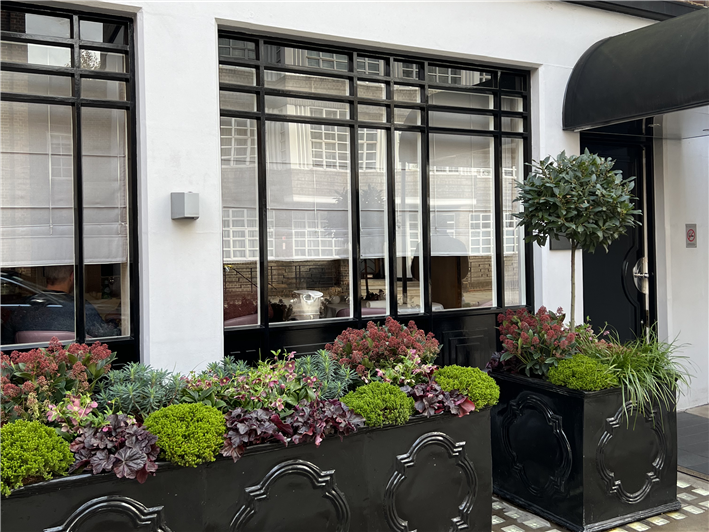

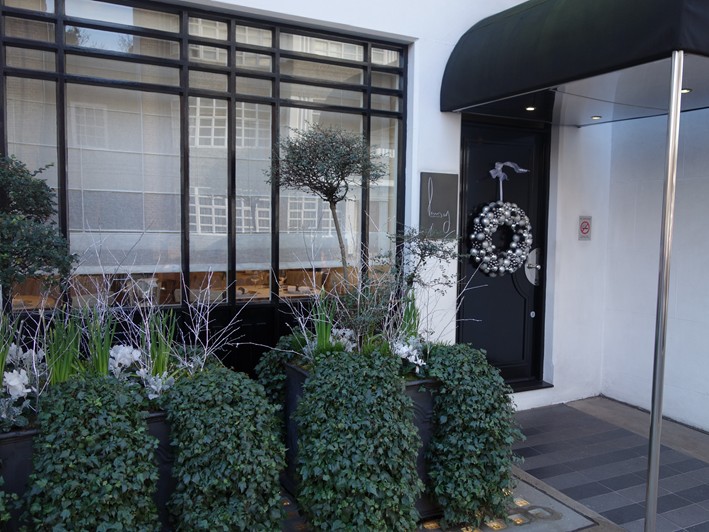
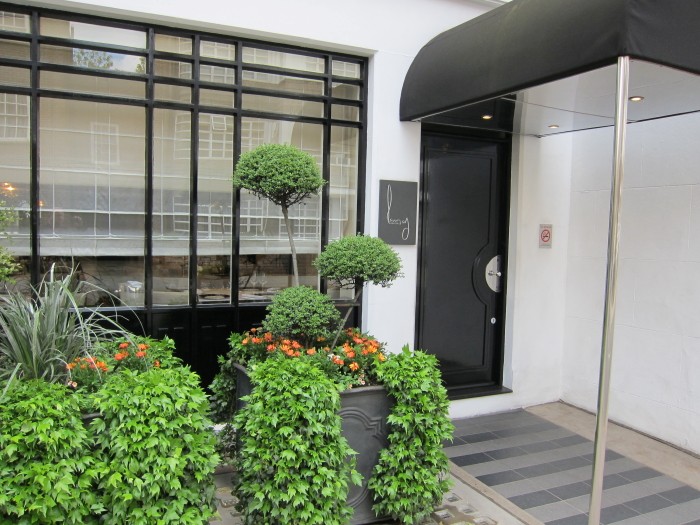

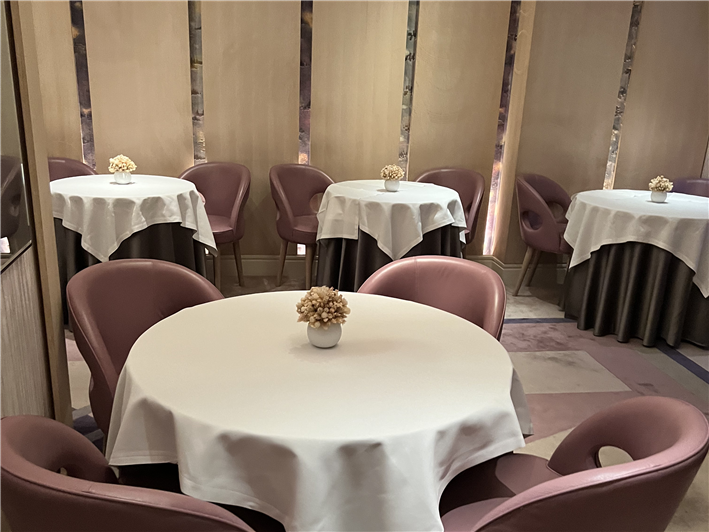
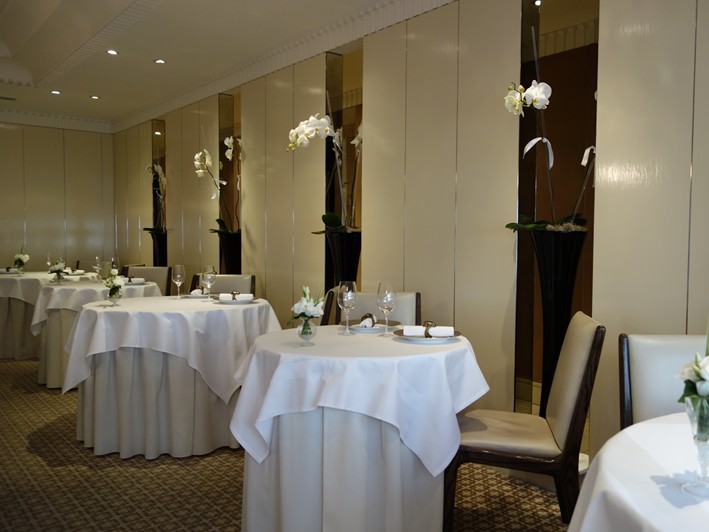
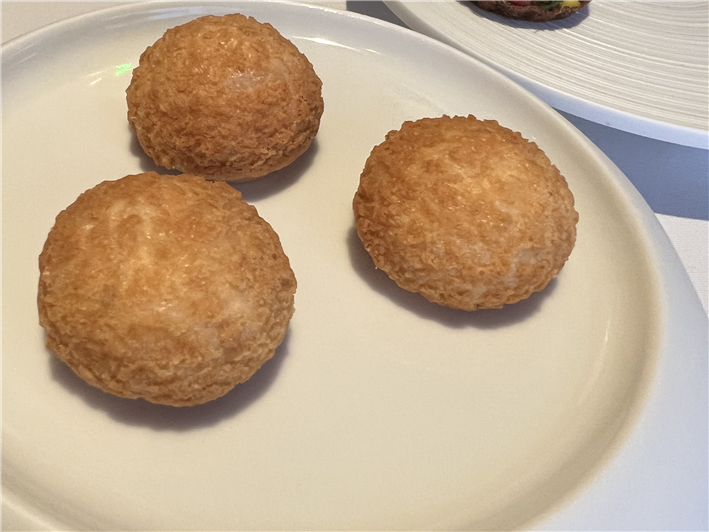
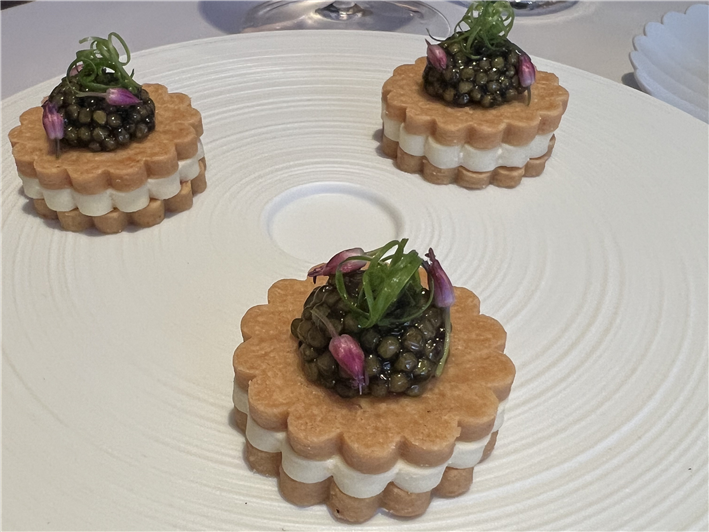
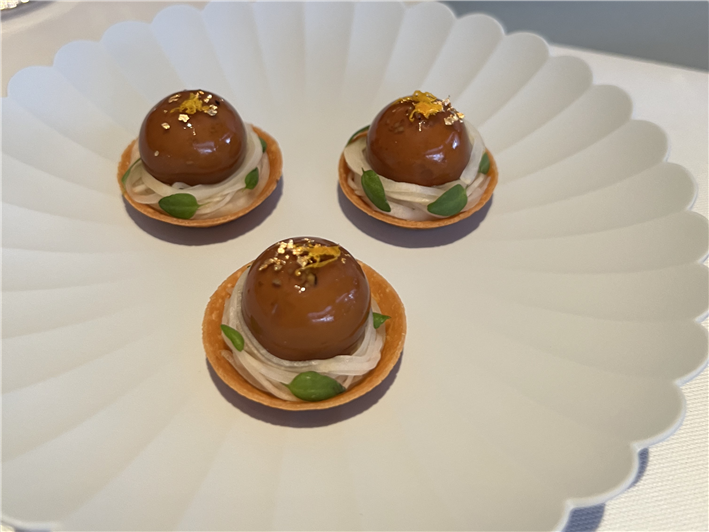
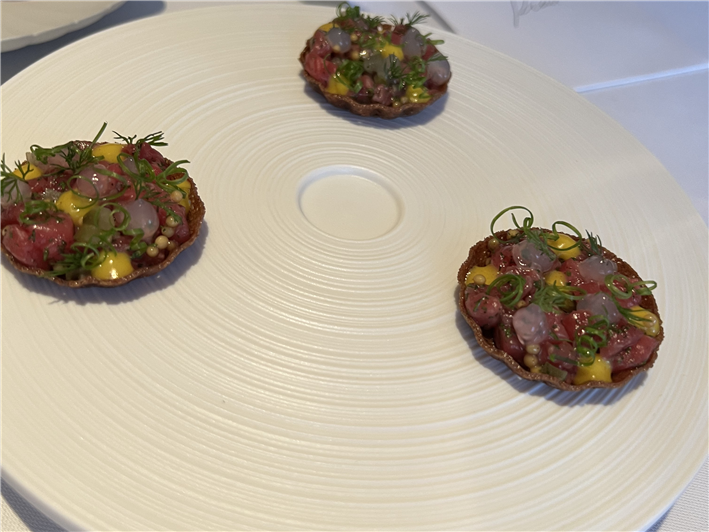
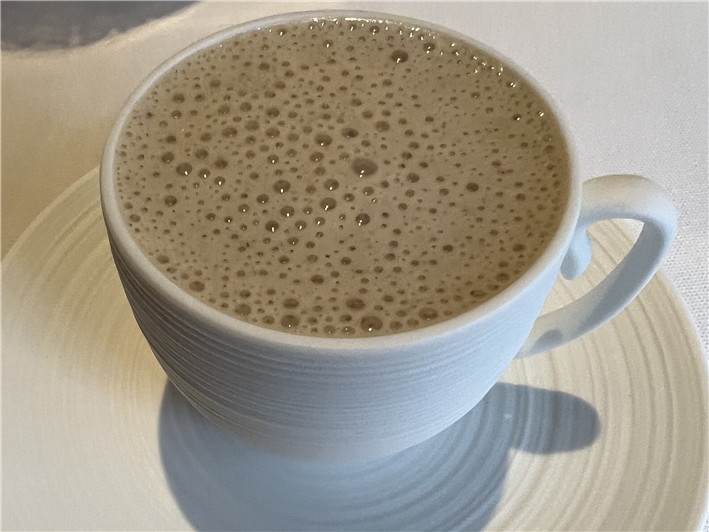
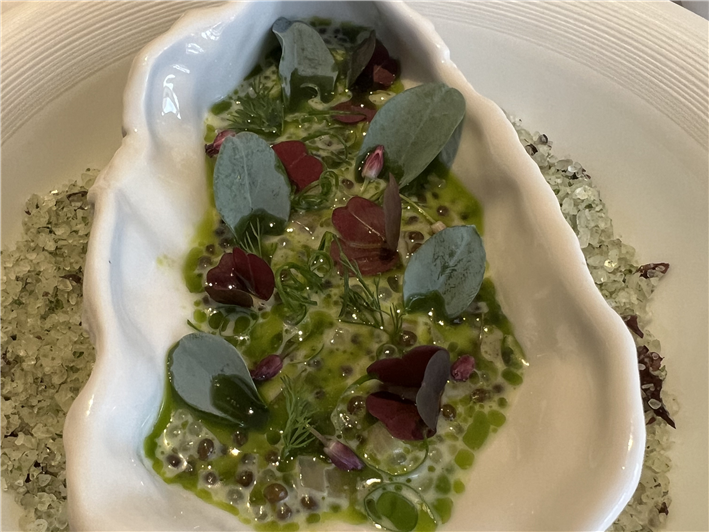
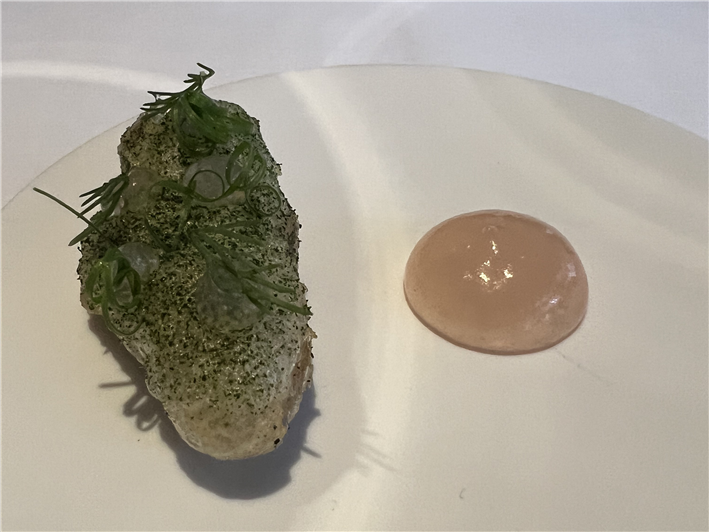

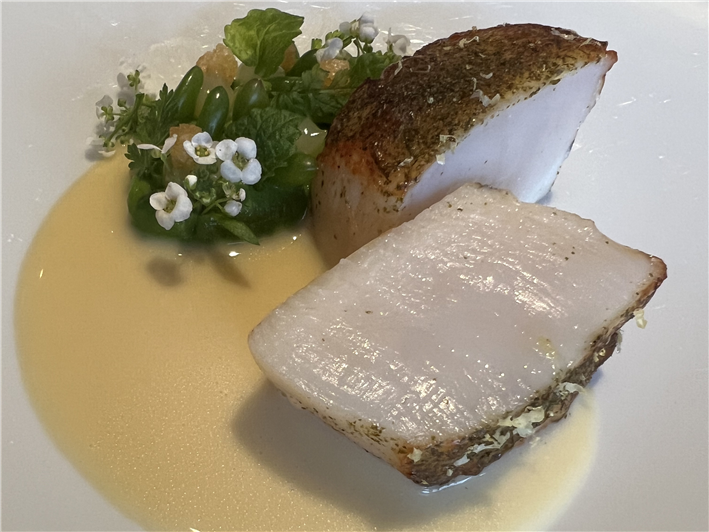
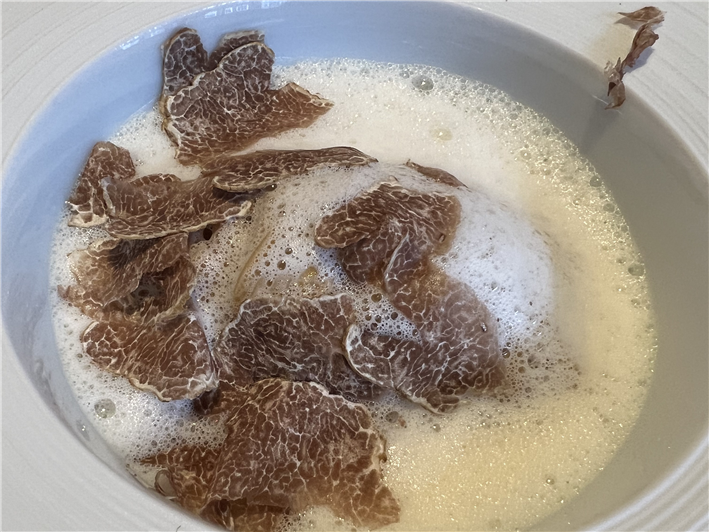
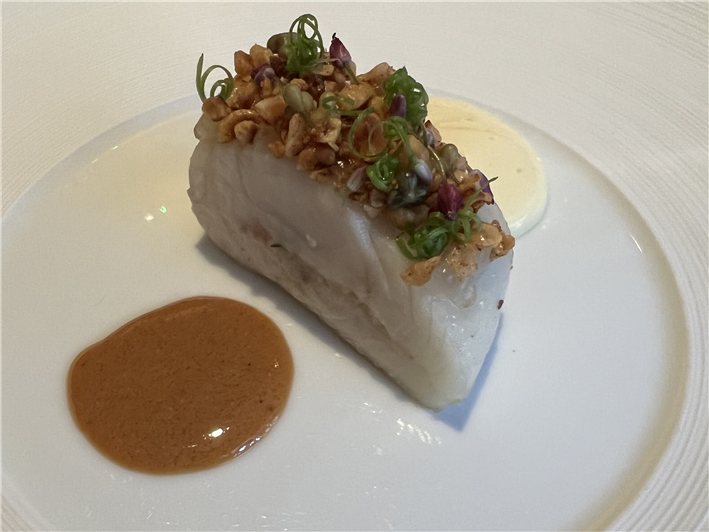

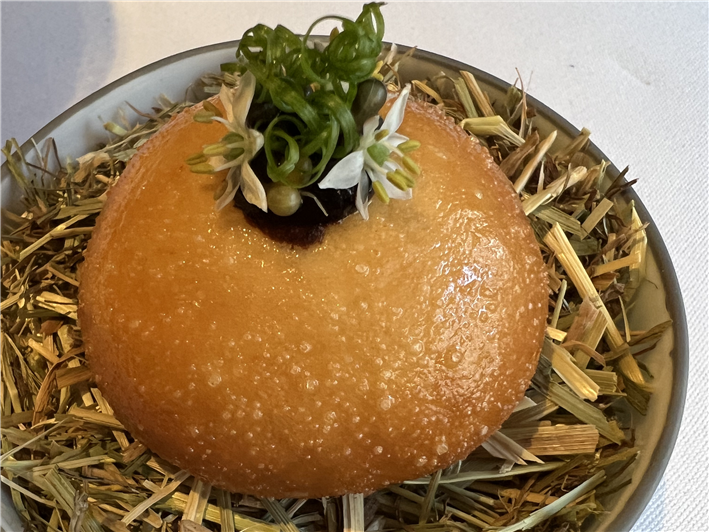

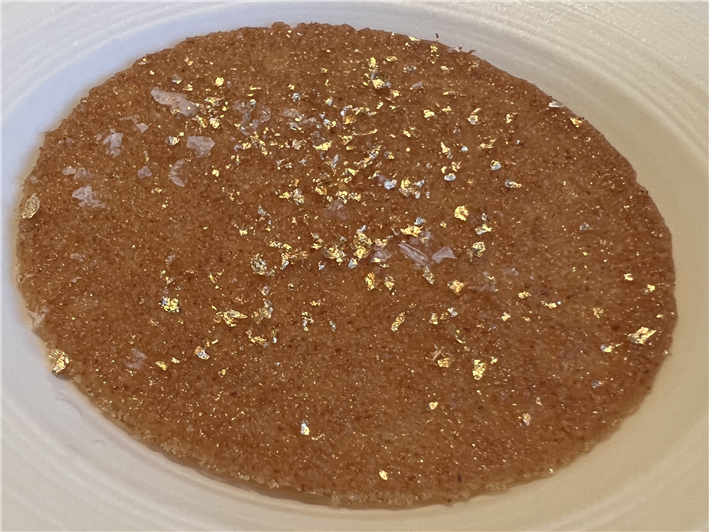
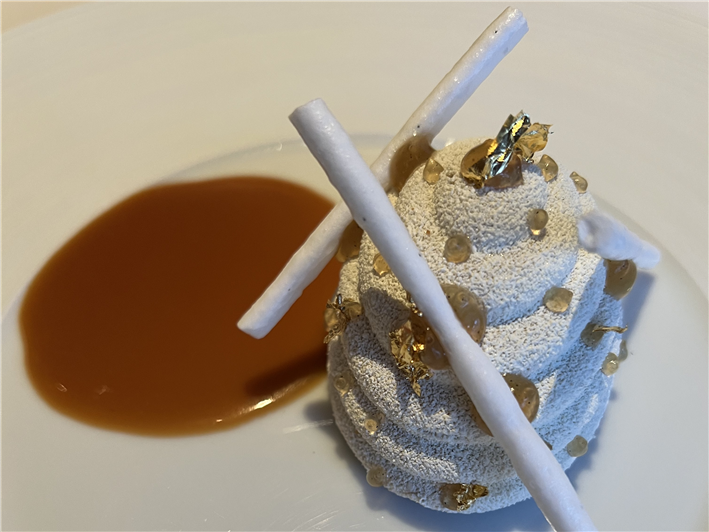
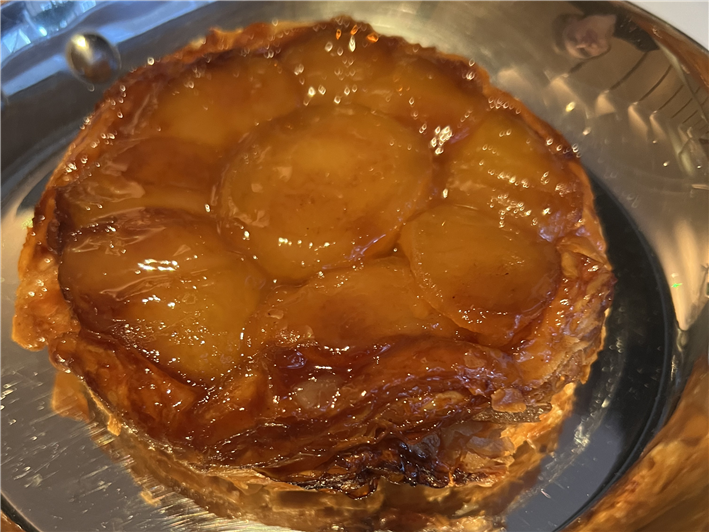
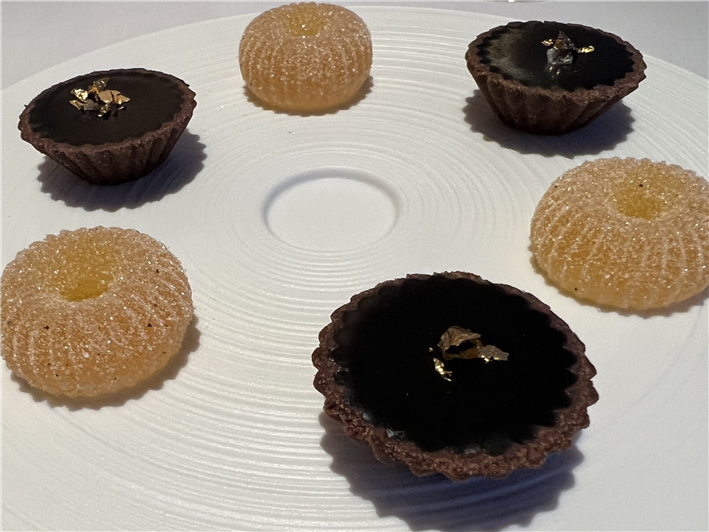

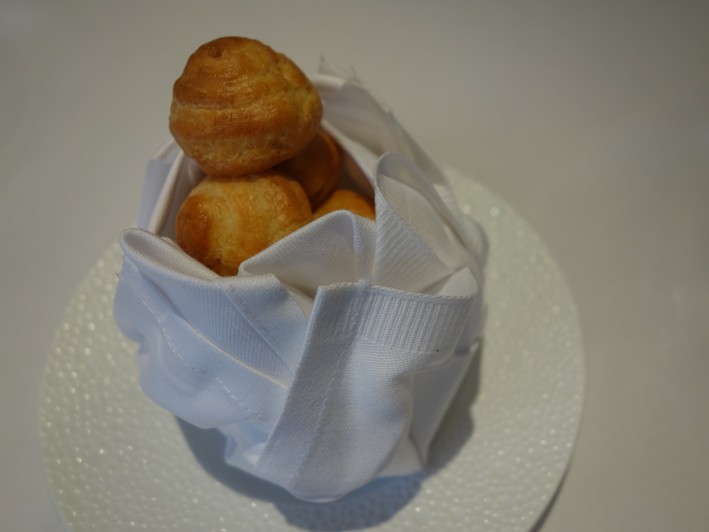
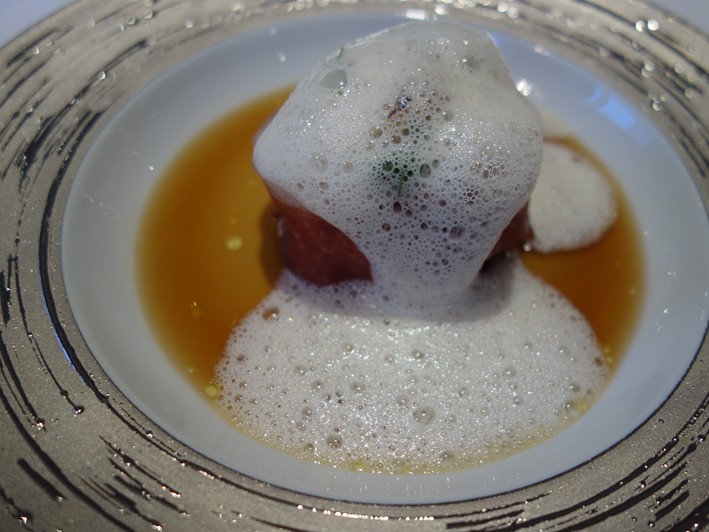
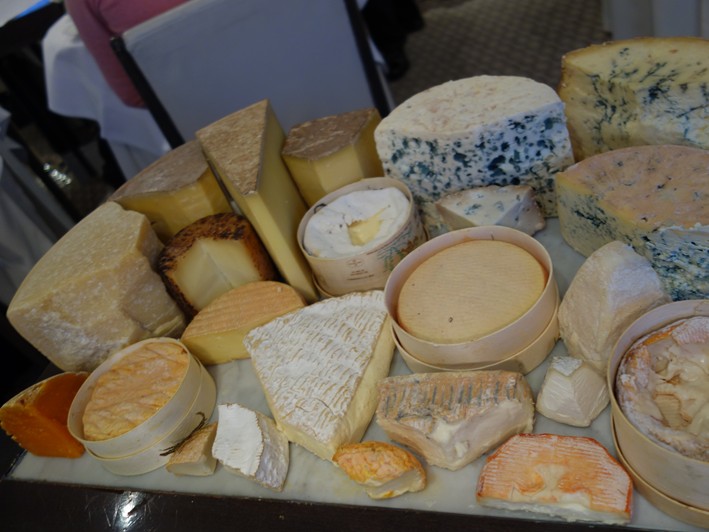
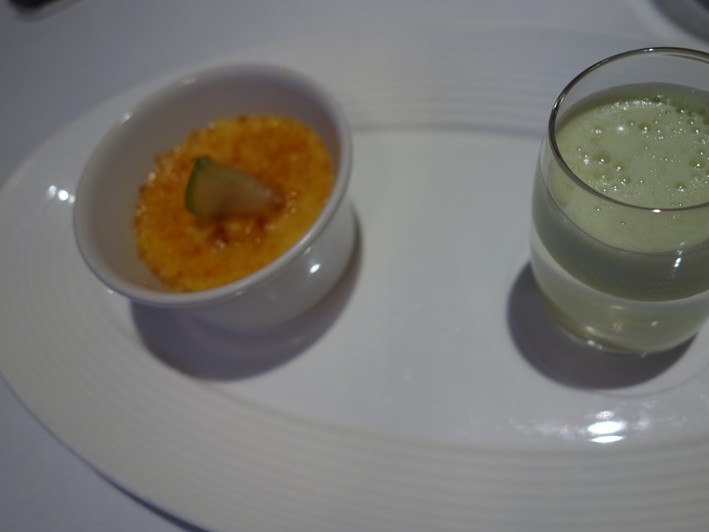


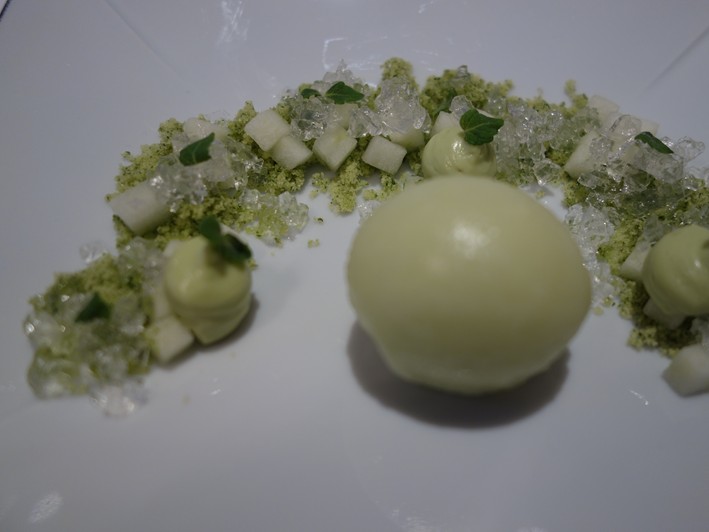

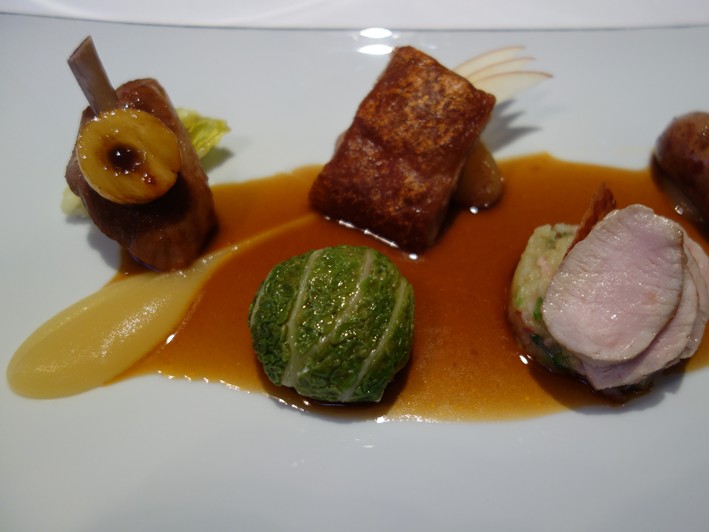
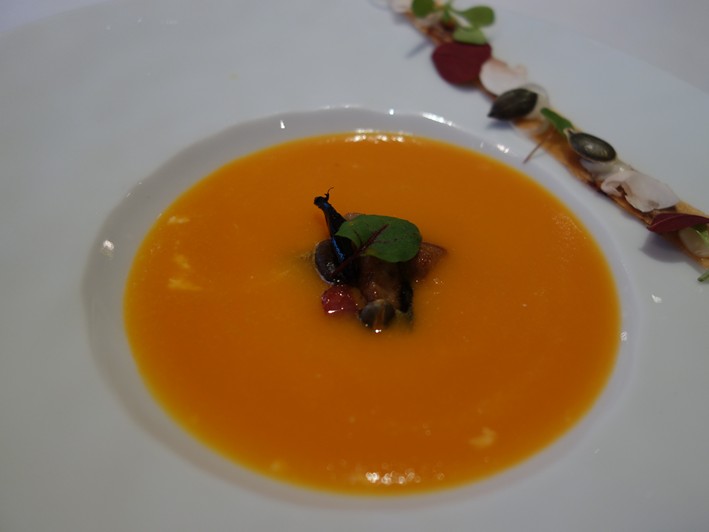
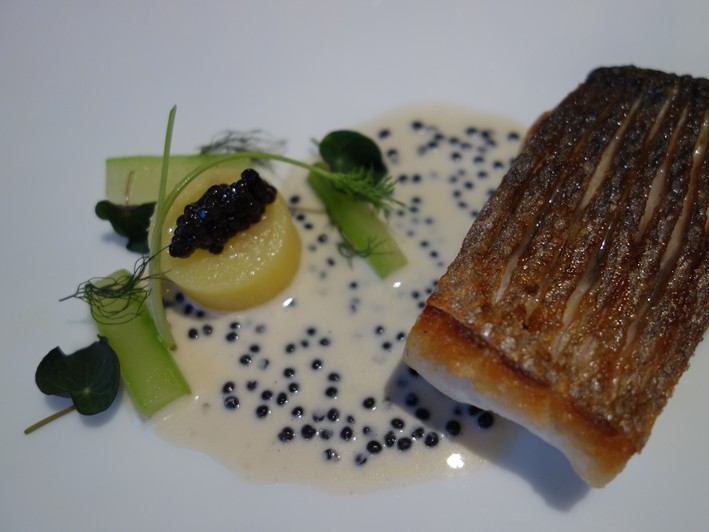



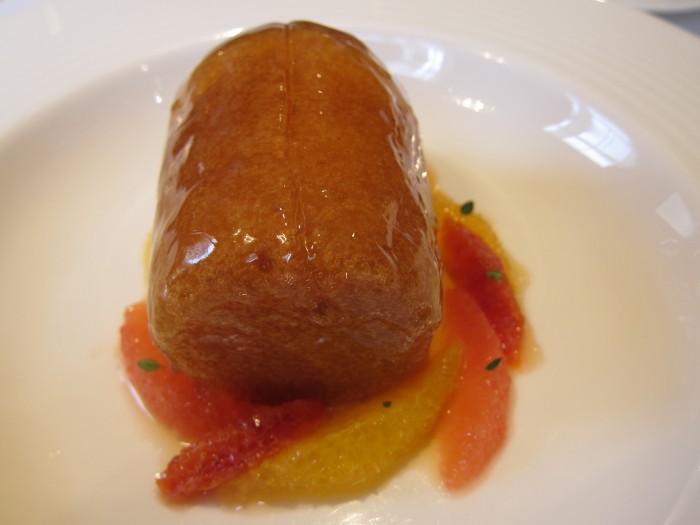
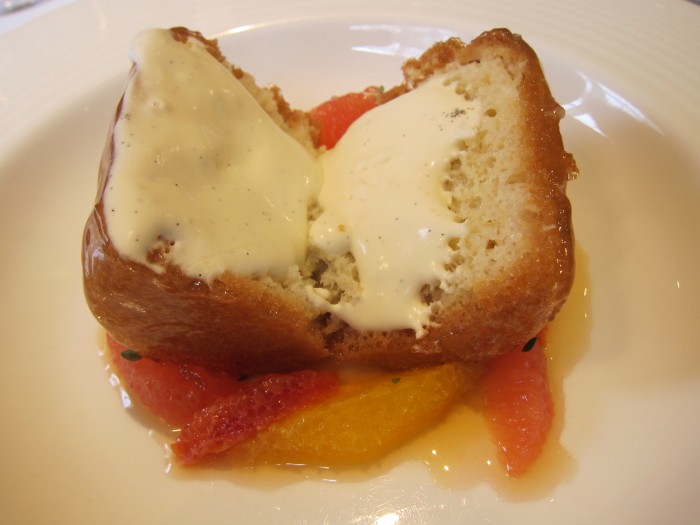

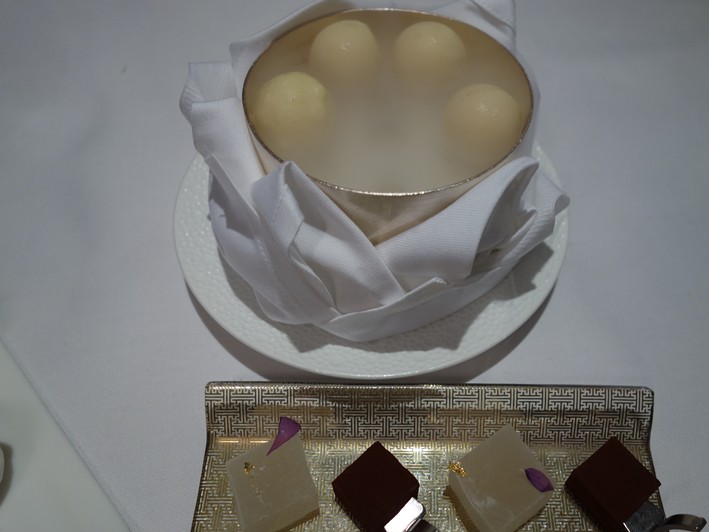
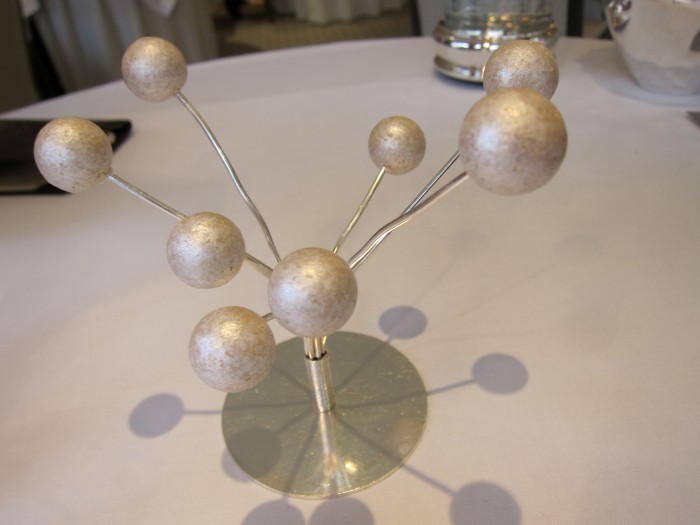

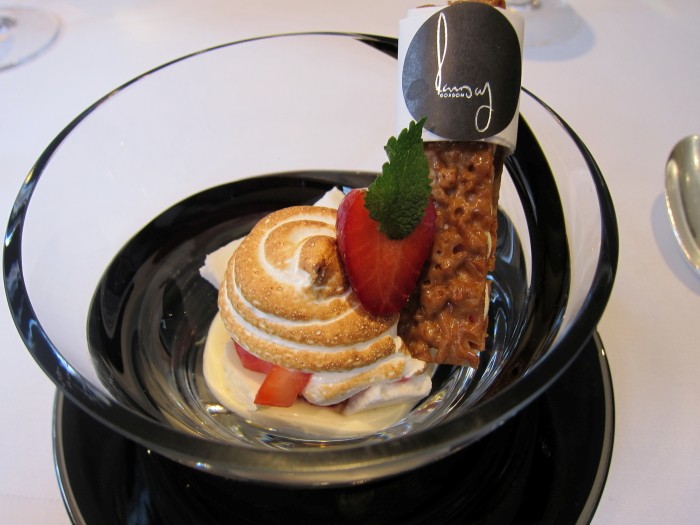
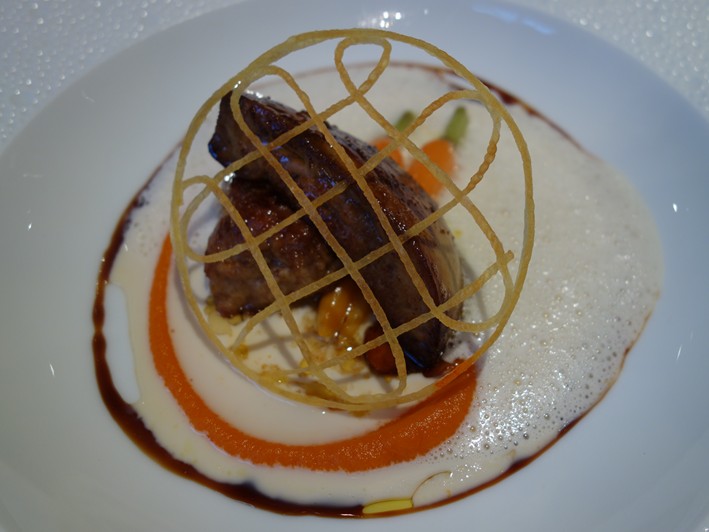
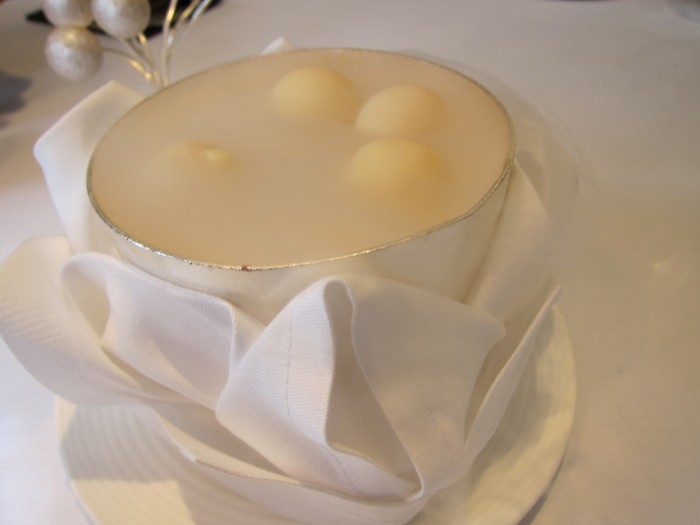
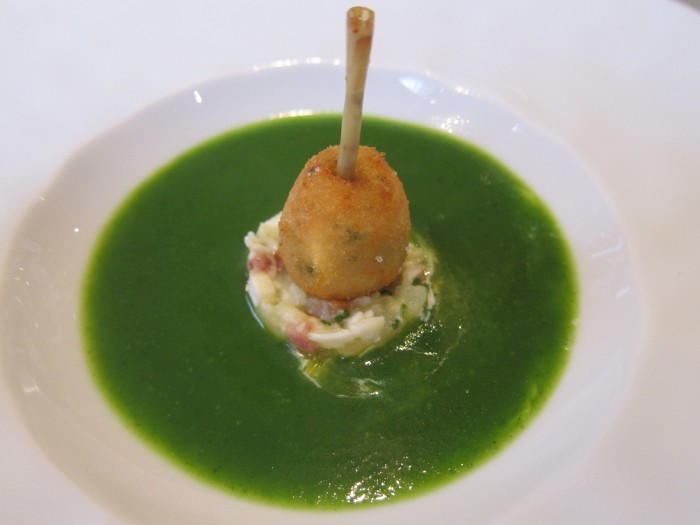

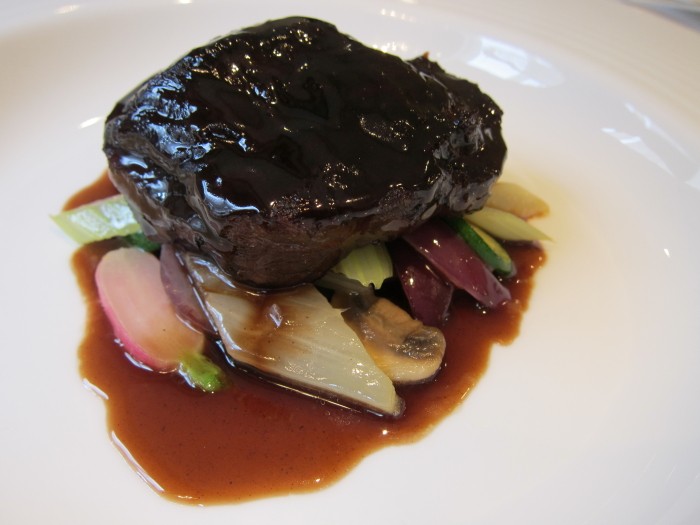

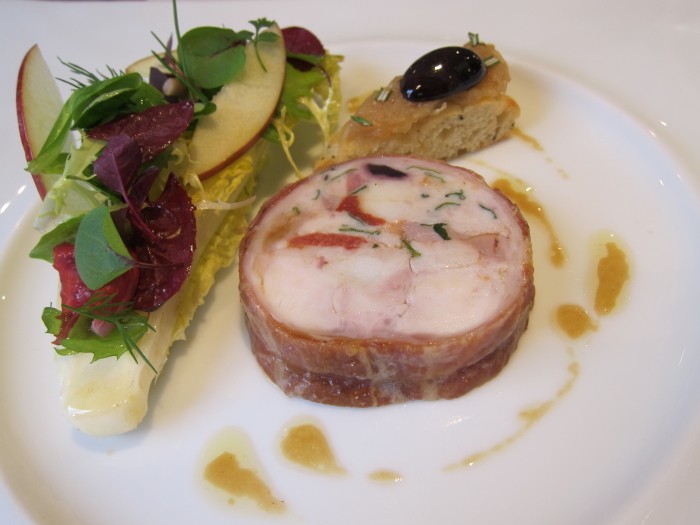


Adrian
We dined at RGR in November this year. It remains very good. I first ate there years ago when Gordon was on the stoves (truly excellent in the scene at the time - we went several times) then when Clare Smyth was in charge (more beige) and recently under Matt's regime for a corporate occasion. Food was excellent by and large, but left us with the impression that the experience lacked engagement and drama. Eating out is so expensive at high end London places now and expectations have changed. It needs more ooomph!
Lucullus
We also had the « carte blanche » menu this week priced at £260 and had exactly the same dishes but without the chestnut linguine and truffles (for which a supplement of £70 would have been payable) and the final apple tarte tatin dessert (which perhaps was given to Andy as a freebie, or perhaps we just missed out). We agree with the overall rating of 17/20 and didn’t mind the hazelnut praline with the brill, although the brill was overcooked to our taste, so 15/20. Oh, and the soup was excellent and served piping hot. The best dishes were the oyster, the scallop and the venison, all 17 or 18/20. The bill came to £1,200 for two, including a glass of champagne, wine pairing and service. So, worth a visit, a very good meal and excellent service but TheRitz is better all round.
Dawson
Nigel's comment echoes my own experience except that when I was there it had two stars, not three. Good to see the tarte tatin is as exemplary today as it was all those years ago on my visit.
Ed
I often think Hospital Road is 'overlooked' in the UK dining scene, due to Gordon's subsequent fame. It still puts out some of the top dishes in London, as evidenced by this review. (The 'never cut a perfectly good scallop in half' is a hill I will happily die on, though!)
Nigel
This was the very first 3 star restaurant I went to, many years ago. If I'm being honest I was a little bit nervous but there was no need as it was a very relaxed dining experience with friendly and enthusiastic staff. I've been to a fair few fancy restaurants since and I'll always remember GRs as being one of the nicest.